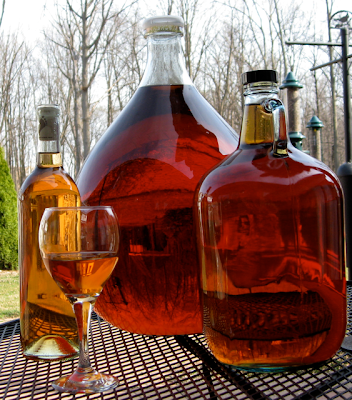I went to the beer store with my DW, and she said something to the clerk about mead. The clerk said he had a kit which included a packet of chemicals and that they sell a 1 gallon bucket of honey just for making mead. I though she was going to make mead, but it turned out she decided that I should make mead.
The mead is an experiment because my wife is involved enough to give directions, but not involved enough to do any of the work. She wants to stick slavishly to the recipe in the kit, which has three kinds of mead: dry, sack, and sweet. Dry mead gets 10 lb of honey, sack gets 15 lb, and sweet gets 20 lb of honey per five gallons total. "Sack mead" is a traditional sweet version of mead. "Sweet" is over-the-top in sweetness for our 21st Century tastebuds.
The recipe I am using is:
20 lb honey
3.5 gallons of spring water (Walmart brand)
7 g yeast nutrient from the kit
7 g of pectic enzyme from the kit
5 oranges, not in the original recipe, but to provide acidity, and some flavor. These were cut, and crushed in my grape crusher
Lavlin EC-1118 yeast (a Champagne type)
I did not boil or otherwise pasteurize the mixture.
After the fermentation started I added:
50 g of chopped raisins (10t)
4.5 cinnamon sticks
1/4 t of cloves
1/2 nutmeg
[would have added 1/4t allspice, but I didn't have any.)
 |
| Crushing the oranges into the honey-water. |
I fermented it a week in a open top plastic container, and then transferred it to glass fermenters. The Brix was still 29, where 0-5 would be typical for fruit wine.
I left the orange rinds in the must because I think leaching the limonene out of the rind will give some welcome bitterness.
The plan is to let it ferment until clarity, then hit it with sorbate to kill the yeast with residual sweetness. I may take some and try to make sparkling wine too.































